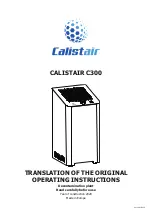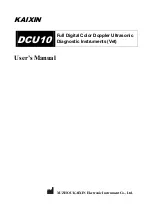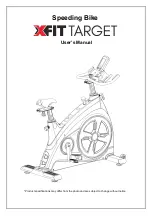
7
Operation
Recommendations during operation
Please check the tubes before using, be sure that tubes are heat resistant. Don’t heat
the tubes over the melting point of the material they are made of. Remember that
thin-walled tubes have a higher thermoconducting factor.
Microtube caps can open under t
he action of high temperature (> 85°C), thus causing
sample volume shrinkage or potential health risk when working with infected material.
To prevent such cases, use microtubes with cap lock of Safe-Lock
®
type.
Do not fill tubes more than 3-5 mm over the level they are immersed in the heat block.
5.1.
Working with model
CH-100
.
Fig. 1. Control panel of CH-100
5.1.1. Connect the external power supply to a grounded power socket. Switch on (position
I
)
the power switch on the rear panel of the unit.
5.1.2. The unit will turn on and the following readouts will be shown on the display:
-
In the upper line
Set
: previously set time and temperature parameters;
-
In the lower line
Actual
: operation status (S
– stopped), timer indication STOP and
current temperature.
5.1.3.
Temperature setting
. Use the
▲ and ▼
T
(ºC)
keys (fig. 1/5) to set the required
temperature. Values are shown on display (upper line, fig. 1/3). Temperature incre-
ment is 0.1ºC. Pressing the key down for more than 2 s makes the values change
quicker.
5.1.4. Press the
RUN/STOP T
(ºC)
key (fig. 1/8) to start heating or cooling. The corres-
ponding operation status is indicated on the display,
H
for heating,
C
for cooling
(fig. 1/1). Current temperature value is shown on display (lower line, fig. 1/5).
5.1.5. To stop the heating or cooling, press the
RUN/STOP T
(ºC)
key again. It takes a few
moments before the heating or cooling process stops and the operation mode
indicator shows
S
, for stopped.
5.1.6. The set temperature can be changed during operation without stopping the process.
5.1.7. After thermal stabilisation of the unit (i.e. after set and current temperatures equalize,
fig. 1/3), open the block lid, place samples and close the lid.
5.1.8.
Timer setting
. The unit is equipped with an independent timer for convenient control
over the samples heating/cooling time.
5.1.9. Use the
▲ and ▼
TIME
keys (fig. 1/4) to set the required time period. Values are
shown on display (upper line, fig. 1/2). Time increment is 1 minute. Pressing the key
down for more than 2 s makes the values change quicker.
5.1.10. Press the
RUN/STOP TIME
key (fig. 1/7) once to start the timer. The elapsed time is
indicated in the lower line of the display (fig.1/2). When the set time is reached, the
timer stops and a sound signal is heard.
Summary of Contents for CH 3-150
Page 1: ......


































